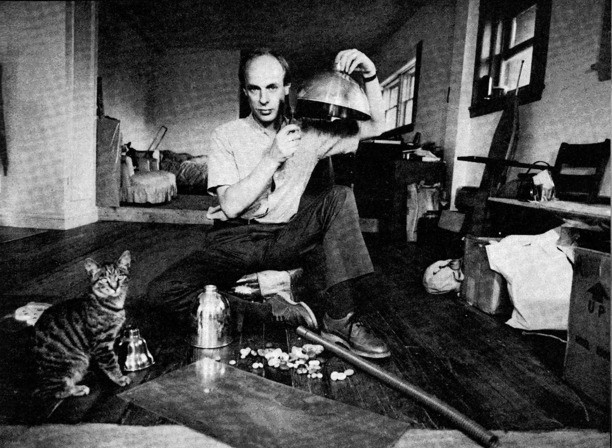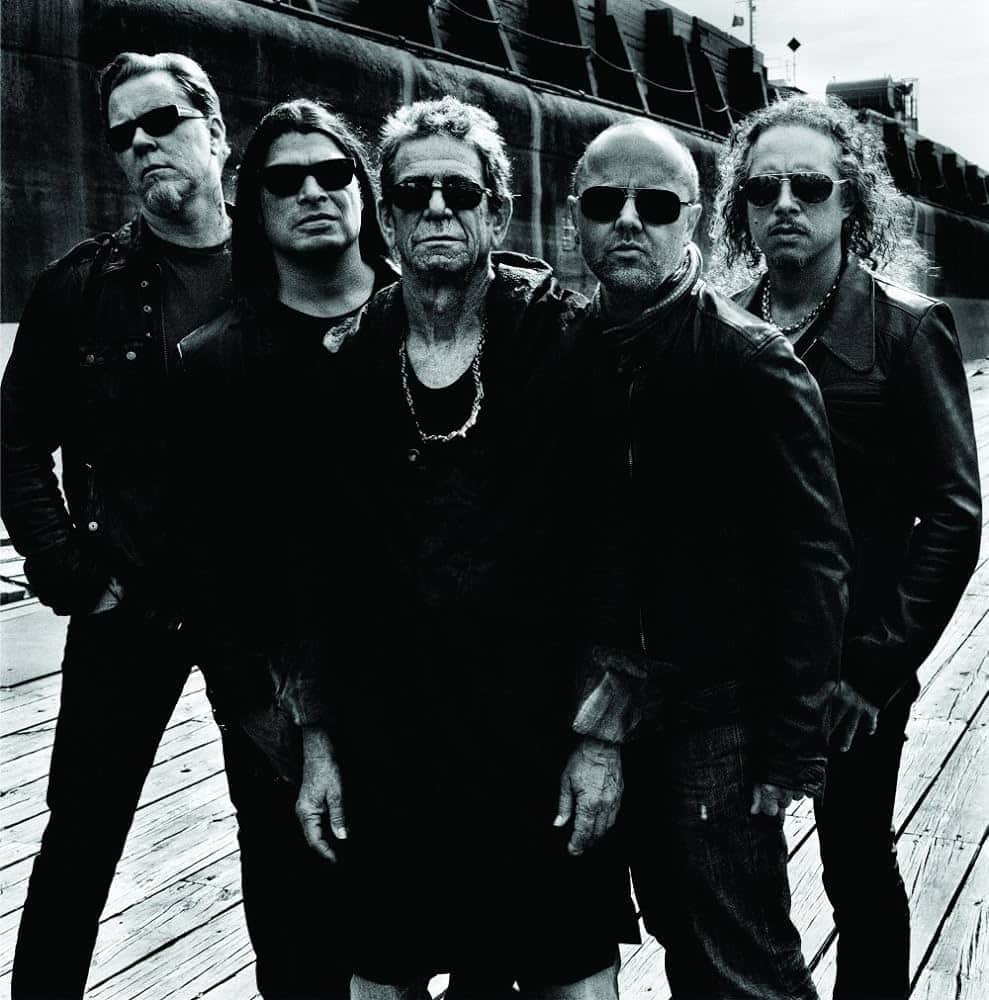THIS WEEK ACROSS TIME – Brian Eno: Dancing About Art Lectures
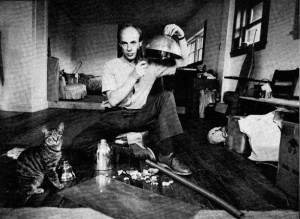 IN 1969, WHO guitarist Pete Townshend made a lecture to the Winchester Schiool of Art at the University of Southampton, on the creative use of tape-recording devices as musical instruments for non-musicians. In attendance was future recording artist and record producer, Brian Eno, who has cited the event as influential in his decision to embark on a music career as a non-musician.
IN 1969, WHO guitarist Pete Townshend made a lecture to the Winchester Schiool of Art at the University of Southampton, on the creative use of tape-recording devices as musical instruments for non-musicians. In attendance was future recording artist and record producer, Brian Eno, who has cited the event as influential in his decision to embark on a music career as a non-musician.
This move was a natural arc for Eno. He had previous college experience in the avant-garde including stripping pianos of their shells and throwing tennis balls at them in the hopes of hearing some music. Conventional forms of practice were clearly not an option for him.
In 1971, Eno joined the newly-formed Roxy Music as technical advisor, operating the mixing desk and processing sound effects from offstage. But driven in his master plan derived from Townshend’s obvious ingenuity, and presumably thanks to some sidestage backing vocals and skill with his trusty tape-recorders, Eno soon endeavoured to show the world how musical he wasn’t by wangling a promotion to outright band member – the next logical step.
All was well for two years and two albums. But flamboyant, attention-seeking make-up and stage-dress, coupled with further impressive non-musical demonstration, soon led to an underlying jealousy rearing its head within the band, causing arguments with vocalist Bryan Ferry. He of course could sing and play keyboards very well, which must’ve caused him much feeling of inadequacy in the company of the multi-talentless Eno. But fate being what it is, Ferry remained, despite his competency, and Eno bowed out of Roxy Music in July 1973.
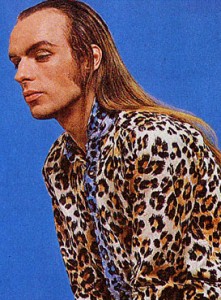 Bored with touring and fed up with all the benefits that being a rock star provided, Eno was now free to continue in contemplation of his next move. Anti shiny music, anti religion and no longer fully committed to his feminine costumery, he was looking for direction. His heroes in the ‘60s were the Velvet Underground, revering Lou Reed for not being tasteful and not letting up. Basically, Lou was Eno’s god. But due to the recent turn of current in Reed’s music, exemplified by his 1973 Berlin album, it was now Eno’s opinion that Lou Reed was doing nothing new and his now slick professional-sounding music had caused a downturn toward becoming distastefully tasteful.
Bored with touring and fed up with all the benefits that being a rock star provided, Eno was now free to continue in contemplation of his next move. Anti shiny music, anti religion and no longer fully committed to his feminine costumery, he was looking for direction. His heroes in the ‘60s were the Velvet Underground, revering Lou Reed for not being tasteful and not letting up. Basically, Lou was Eno’s god. But due to the recent turn of current in Reed’s music, exemplified by his 1973 Berlin album, it was now Eno’s opinion that Lou Reed was doing nothing new and his now slick professional-sounding music had caused a downturn toward becoming distastefully tasteful.
It was up to Brian Peter George St. John le Baptiste de la Salle Eno now. He had to be the way. He had to be the light. In September 1973, he attempted to achieve this by assembling sixteen incompatible musicians, relying on them to bring the songs to life. With ease of communication a priority, Eno established initial song structure ideas by instructing the musicians visually through the medium of dance. This mathematical semaphore to a mute soundtrack suggested energies rather than notes. They didn’t matter: the players could worry about those. In addition, he formed the basis of lyrics by singing and recording nonsense syllables. This was not necessarily a disrespectable technique, but its inclusion paved the way toward the end result being a group of songs mostly about nothing.
 In contrast, Lou Reed’s Berlin had the substantial concept of a couple doomed by violence and addiction, slickly performed by first-call rock players and shaped by producer, Bob Ezrin. Eno’s project was eclectic musicians trying to make sense of his lack of direction. Crafted cutting-edge product versus a hodge-podge with inconsistent sound quality. Smooth versus rough. Big, small, sharp, blunt. A matter of taste. It was for everyone else to make up their mind when the album was released in January 1974.
In contrast, Lou Reed’s Berlin had the substantial concept of a couple doomed by violence and addiction, slickly performed by first-call rock players and shaped by producer, Bob Ezrin. Eno’s project was eclectic musicians trying to make sense of his lack of direction. Crafted cutting-edge product versus a hodge-podge with inconsistent sound quality. Smooth versus rough. Big, small, sharp, blunt. A matter of taste. It was for everyone else to make up their mind when the album was released in January 1974.
In all fairness, there are some mighty fine moments on Here Come The Warm Jets, not the least of which was Eno’s personal favourite, ‘Driving Me Backwards’. But he wasn’t above self-criticism, soon going on record as saying he could see much room for improvement. Lou Reed’s Berlin was in some ways backward-looking compared to Warm Jets, which became highly influential, especially on some post-punk acts such as XTC where, in places in their early discography, the guiding light of Eno’s first-born was plain to see.
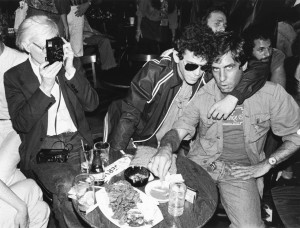
Ultimately, Here Come The Warm Jets was a success, reaping glowing press coverage. Not so for Berlin, which although having sold and charted respectably, became a critical dumping ground, causing Lou Reed much disillusion. 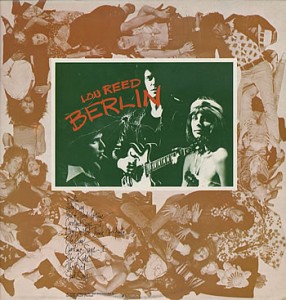 But Brian Eno was now well on his way to the sainthood his full name awkwardly suggested, and to the praise his disciples continued to heap upon him more as time passed, but which his atheistic modesty always allowed him to easily brush off. That was a redeeming feature. Along with the dancing. PETER KEARNS
But Brian Eno was now well on his way to the sainthood his full name awkwardly suggested, and to the praise his disciples continued to heap upon him more as time passed, but which his atheistic modesty always allowed him to easily brush off. That was a redeeming feature. Along with the dancing. PETER KEARNS

